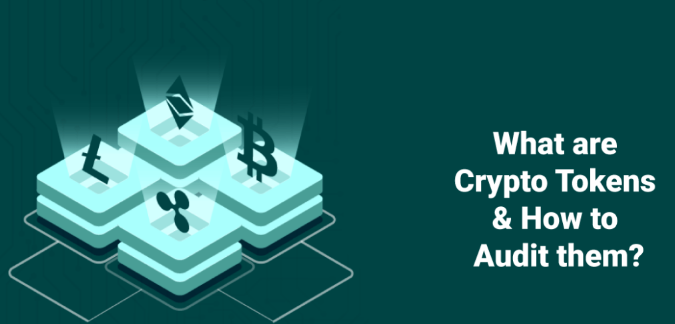How to Test and Audit Your Cryptocurrency for Vulnerabilities
Cryptocurrency development is a highly complex process that requires rigorous security testing and auditing to prevent hacks, exploits, and financial losses. With billions of dollars lost to vulnerabilities in smart contracts, wallets, and blockchain protocols, ensuring robust security is critical for any crypto project.
This guide explores best practices for testing and auditing cryptocurrencies, covering key security threats, audit processes, and essential tools to protect your blockchain ecosystem.
1. Understanding Cryptocurrency Vulnerabilities
Cryptocurrency networks, smart contracts, and wallets are often targeted by cybercriminals due to their financial value. Common vulnerabilities include:
a) Smart Contract Vulnerabilities
- Reentrancy Attacks: A function calls itself before the initial execution is complete, leading to fund drain (e.g., The DAO hack).
- Integer Overflows & Underflows: Miscalculations in arithmetic operations can allow attackers to manipulate balances.
- Front-Running Attacks: Malicious actors exploit unconfirmed transactions in public mempools for financial gain.
- Logic Errors: Flaws in contract conditions or permissions can lead to unintended exploits.
b) Blockchain Protocol Vulnerabilities
- 51% Attack: If a single entity gains majority control over a blockchain’s mining or staking power, they can manipulate transactions.
- Consensus Manipulation: Exploiting weaknesses in Proof of Stake (PoS) or Proof of Work (PoW) consensus mechanisms.
- Sybil Attacks: An attacker floods a network with fake nodes to gain control over decision-making.
c) Wallet and Transaction Vulnerabilities
- Private Key Leaks: Weak encryption or poor key storage practices expose private keys to theft.
- Phishing Attacks: Malicious websites trick users into revealing wallet credentials.
- Man-in-the-Middle Attacks: Intercepting transactions between wallets and blockchain nodes.
Understanding these risks is the first step in securing your cryptocurrency project. The next step is implementing proper testing and auditing strategies.
2. Testing Your Cryptocurrency for Security Flaws
Thorough testing ensures that your blockchain or smart contract operates securely before deployment. Below are key testing methods:
a) Unit Testing for Smart Contracts
Unit testing involves testing individual functions within a smart contract to ensure they perform as expected.
Best Practices for Smart Contract Unit Testing:
- Use testing frameworks like Truffle (Ethereum) or Hardhat (Ethereum).
- Write test cases for edge scenarios (e.g., extreme values, incorrect inputs).
- Simulate real-world conditions using Ganache (Ethereum test environment).
b) Fuzz Testing
Fuzz testing (or fuzzing) involves inputting random and unexpected data to uncover security flaws.
Fuzz Testing Tools:
- Echidna: A property-based fuzzer for Ethereum smart contracts.
- Foundry: A fast, flexible framework for testing Solidity contracts.
c) Penetration Testing
Penetration testing (pen testing) simulates real-world attacks on your blockchain or wallet to identify weaknesses.
Key Penetration Testing Techniques:
- Network Testing: Assess vulnerabilities in blockchain nodes, APIs, and endpoints.
- Smart Contract Exploitation: Attempt known exploits like reentrancy or underflow attacks.
- Wallet & Key Management Tests: Check for weak encryption, insecure key storage, and phishing vulnerabilities.
Popular Pen Testing Tools:
- MythX: Smart contract security analysis tool.
- Slither: Static analysis framework for detecting smart contract vulnerabilities.
- Manticore: Symbolic execution tool for finding smart contract bugs.
d) Load & Stress Testing
Load testing simulates high transaction volumes to evaluate how the blockchain performs under stress.
Load Testing Best Practices:
- Use Locust or JMeter to simulate thousands of transactions per second.
- Monitor gas fee spikes and potential network congestion.
- Ensure efficient consensus validation under high loads.
Once testing is complete, the next step is conducting a formal security audit.
3. Auditing Your Cryptocurrency for Security Risks
A security audit is a structured assessment of your cryptocurrency project’s code, architecture, and security measures.
a) Steps in a Crypto Security Audit
- Code Review & Static Analysis
- Review smart contracts line by line for logic errors.
- Use Slither or Mythril to scan for vulnerabilities.
- Manual Penetration Testing
- Ethical hackers manually test for exploits.
- Common attack simulations include flash loan exploits and reentrancy attacks.
- Gas Optimization Audit
- Ensure smart contract efficiency to minimize transaction fees.
- Remove unnecessary loops and reduce on-chain storage usage.
- Formal Verification
- Uses mathematical proofs to verify smart contract behavior.
- Tools like Certora Prover help automate this process.
- Deployment & Security Monitoring
- Implement real-time monitoring for unusual activity.
- Use Chainalysis or Forta to detect on-chain exploits.
4. Choosing a Smart Contract Audit Firm
For large-scale crypto projects, hiring a professional auditing firm is essential.
Top Crypto Security Audit Firms:
- CertiK: Specializes in blockchain security and automated verification.
- OpenZeppelin: Industry leader in Ethereum smart contract security.
- Hacken: Offers blockchain security assessments and penetration testing.
- SlowMist: Focuses on smart contract auditing and risk analysis.
What to Look for in an Audit Firm?
- Experience in blockchain security with major cryptocurrency projects.
- Clear audit reports with detailed vulnerability descriptions and fixes.
- Reputation and credibility within the crypto community.
5. Implementing Post-Audit Security Measures
After completing the audit, take these steps to strengthen security:
- Fix Identified Vulnerabilities
- Apply recommended fixes and test again before deployment.
- Deploy with Upgradeability in Mind
- Use proxy contracts or upgradeable smart contract patterns.
- Implement Multi-Signature Wallets
- Require multiple signatures for critical transactions.
- Continuous Monitoring & Bug Bounty Programs
- Use tools like Forta for real-time threat detection.
- Launch a bug bounty program on platforms like Immunefi to incentivize ethical hackers.
Conclusion
Testing and auditing your cryptocurrency for vulnerabilities is essential to prevent hacks and financial losses. By performing unit tests, fuzzing, penetration testing, and formal audits, you can strengthen security before launching your project. Hiring a professional audit firm, implementing post-audit security measures, and monitoring for threats will ensure your cryptocurrency remains secure and reliable in the ever-evolving blockchain landscape.

Also Read :
